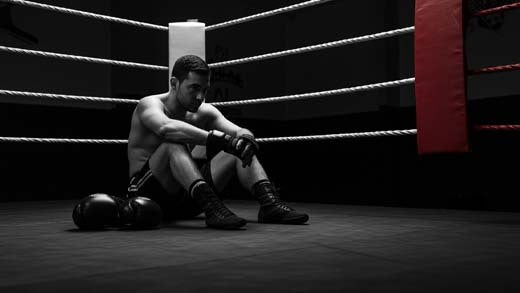Boxers, MMA athletes or any athletes involved in combat sports subject themselves to intense workouts that cause muscle pain and exhaustion. Recovery is important in order to increase the rate of healing, decrease stiffness and optimize performance. The two most effective recovery techniques are the ice bath and massage gun. However, each has its own advantages. Ice baths facilitate in alleviating the swelling of muscles, easing the muscle pain, and supporting a quicker muscle recovery. On the other hand, massage guns use massage compression to trigger the tender muscle point and enhance blood flow. Now, let’s discuss how these approaches apply and advantage fighters.
1. Ice Baths:
A Time-Tested Recovery Method
Ice baths are known to have been adopted by athletes in the past and present our athletes now in a cutting-edge method of recovery. It entails placing the body of it in cold water, which ranges from 50-59°F (10-15°C) with the intention of managing muscle soreness and recovery.
-
Ice Bath Benefits
The main advantage of an ice bath is its effectiveness in inflammation reduction. When the body is soaked in cold water, the blood vessels close to the surface narrow in order to minimize inflammation and eliminate waste products. When the person gets out of the ice bath, flow to muscles is increased to supply fresh nutrients that will help in repairing the tissues. Other benefits include:
-
Decreased muscle soreness (Delayed Onset Muscle Soreness or DOMS).
-
Reduced inflammation and swelling.
-
Faster recovery between workouts or fights.
-
How Long Should You Stay in an Ice Bath?
There will always be variations from fighter to fighter, but the duration that is believed to be most effective is 10-15 minutes. Any stay beyond this duration exposes the climber to discomfort and probable hypothermia risk. However, always understand your body signals and never overexert yourself at any one given instance.
-
Ice Bath Before or After Workout?
Though most athletes take ice baths after training or performing during a competition, there are other studies that recommend that taking an ice bath before exercising could reduce muscle stiffness that is brought about by injuries. Ice baths, however, are normally used after workouts in order to help muscles recover faster and to lessen inflammation resulting from rigorous exercises.
-
How Cold Should an Ice Bath Be?
Ice baths are best taken with water that is 50-59°F (10-15°C) in temperature. Temperatures of water below this level can be considered as chilly and even dangerous, whereas water above the required level can provide a poor relaxation effect. An ice bath should always be cold enough to work, but it should not be so cold to harm the body.
2. Massage Guns:
Targeted Muscle Relief
Another physical recovery procedure that is commonly used among fighters is a massage gun. These are portable appliances that administer short pulses of pressure on specific muscular groups in order to promote the release of adhesions, facilitate blood circulation and decrease inflammation.
-
Do Massage Guns Work?
Oh indeed, massage guns are quite effective when it comes to muscle recovery too. Ought to help work on tightening within the muscles and boost blood flow, which could also be of great use in getting rid of pain and rigidity. Besides working on the muscles, these machines also enhance flexibility and this is very crucial for fighters as they need to bend their bodies in many unnatural ways while fighting.
-
What Do Massage Guns Do?
Massage guns operate through the process of applying short, repeated strokes that successfully stimulate deeply into muscles. This kind of percussive therapy promotes the circulation of blood as well as helps to release muscle tension. They may be used from the neck going down to the calf region depending on where the pains are being experienced.
3. Stretching and Mobility Exercises
Stretching and mobility exercises involve stretching and are very good when it comes to preventing injuries. While dynamic stretching prepares muscles before any physical activity, static stretching is done after the exercise to increase flexibility. Fate, foam rolling, and yoga have claimed that they help in the prevention of stagnation and improve muscle pliability, which plays a role in their recovery mobility exercises.
4. Hydration and Proper Nutrition
According to them, one gets dehydrated and therefore needs adequate nutrition as one recovers from injuries. Thus, the intake of fresh water washes the remnants of toxins and stiffens muscles to prevent cramping, and enough intake of proteins and carbohydrates assists in the repair of muscles and energy-boosting, respectively. Leaning toward higher protein intake assists your muscles rebuild and carbs from fruits, vegetables, and whole grains help replenish them.
5. Rest and Sleep
When the body is most relaxed, muscles are rested and the mind is refreshed; this is when the healing begins. Adrenaline junkies tend to neglect the importance of sleep and how it helps rebuild tissues and restore energy and hormone levels in the body. Daily recommended sleep should be between 7-9 hours and make sure there are rest days in between muscle-straining exercises.
Conclusion: Recovery is Key to Success
There are necessary steps to enhance performance, such as ice baths and massage guns. Ice baths help in the reduction of inflammation and massage guns aim at the inflamed muscles. Use these together with the right diet, drinking water, stretching, and sleep if you want to achieve the fastest recovery. To get the standard tools that will help to recover after you read this, you should come to Sting Sports and go that extra mile to achieve the best results!
Ready to elevate your recovery routine? Visit Sting Sports today to explore the latest in protective gear, from headgear to boxing gloves, designed for your ultimate protection!

